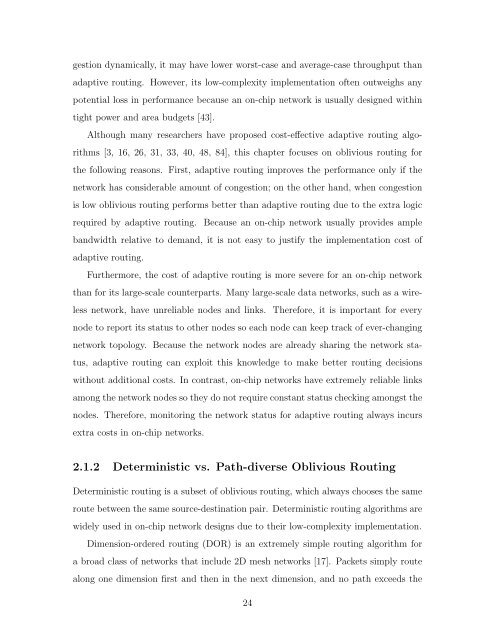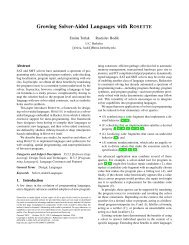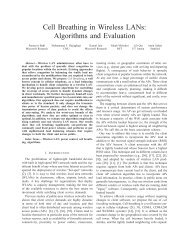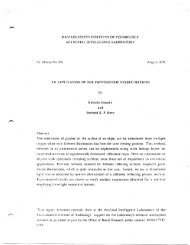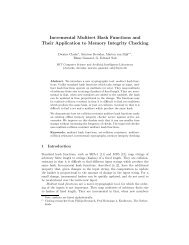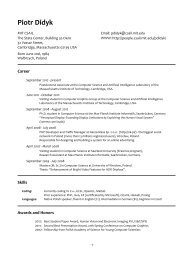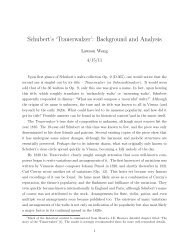On-chip Networks for Manycore Architecture Myong ... - People - MIT
On-chip Networks for Manycore Architecture Myong ... - People - MIT
On-chip Networks for Manycore Architecture Myong ... - People - MIT
Create successful ePaper yourself
Turn your PDF publications into a flip-book with our unique Google optimized e-Paper software.
gestion dynamically, it may have lower worst-case and average-case throughput than<br />
adaptive routing. However, its low-complexity implementation often outweighs any<br />
potential loss in per<strong>for</strong>mance because an on-<strong>chip</strong> network is usually designed within<br />
tight power and area budgets [43].<br />
Although many researchers have proposed cost-e↵ective adaptive routing algorithms<br />
[3, 16, 26, 31, 33, 40, 48, 84], this chapter focuses on oblivious routing <strong>for</strong><br />
the following reasons. First, adaptive routing improves the per<strong>for</strong>mance only if the<br />
network has considerable amount of congestion; on the other hand, when congestion<br />
is low oblivious routing per<strong>for</strong>ms better than adaptive routing due to the extra logic<br />
required by adaptive routing. Because an on-<strong>chip</strong> network usually provides ample<br />
bandwidth relative to demand, it is not easy to justify the implementation cost of<br />
adaptive routing.<br />
Furthermore, the cost of adaptive routing is more severe <strong>for</strong> an on-<strong>chip</strong> network<br />
than <strong>for</strong> its large-scale counterparts. Many large-scale data networks, such as a wireless<br />
network, have unreliable nodes and links. There<strong>for</strong>e, it is important <strong>for</strong> every<br />
node to report its status to other nodes so each node can keep track of ever-changing<br />
network topology. Because the network nodes are already sharing the network status,<br />
adaptive routing can exploit this knowledge to make better routing decisions<br />
without additional costs. In contrast, on-<strong>chip</strong> networks have extremely reliable links<br />
among the network nodes so they do not require constant status checking amongst the<br />
nodes. There<strong>for</strong>e, monitoring the network status <strong>for</strong> adaptive routing always incurs<br />
extra costs in on-<strong>chip</strong> networks.<br />
2.1.2 Deterministic vs. Path-diverse Oblivious Routing<br />
Deterministic routing is a subset of oblivious routing, which always chooses the same<br />
route between the same source-destination pair. Deterministic routing algorithms are<br />
widely used in on-<strong>chip</strong> network designs due to their low-complexity implementation.<br />
Dimension-ordered routing (DOR) is an extremely simple routing algorithm <strong>for</strong><br />
a broad class of networks that include 2D mesh networks [17]. Packets simply route<br />
along one dimension first and then in the next dimension, and no path exceeds the<br />
24


